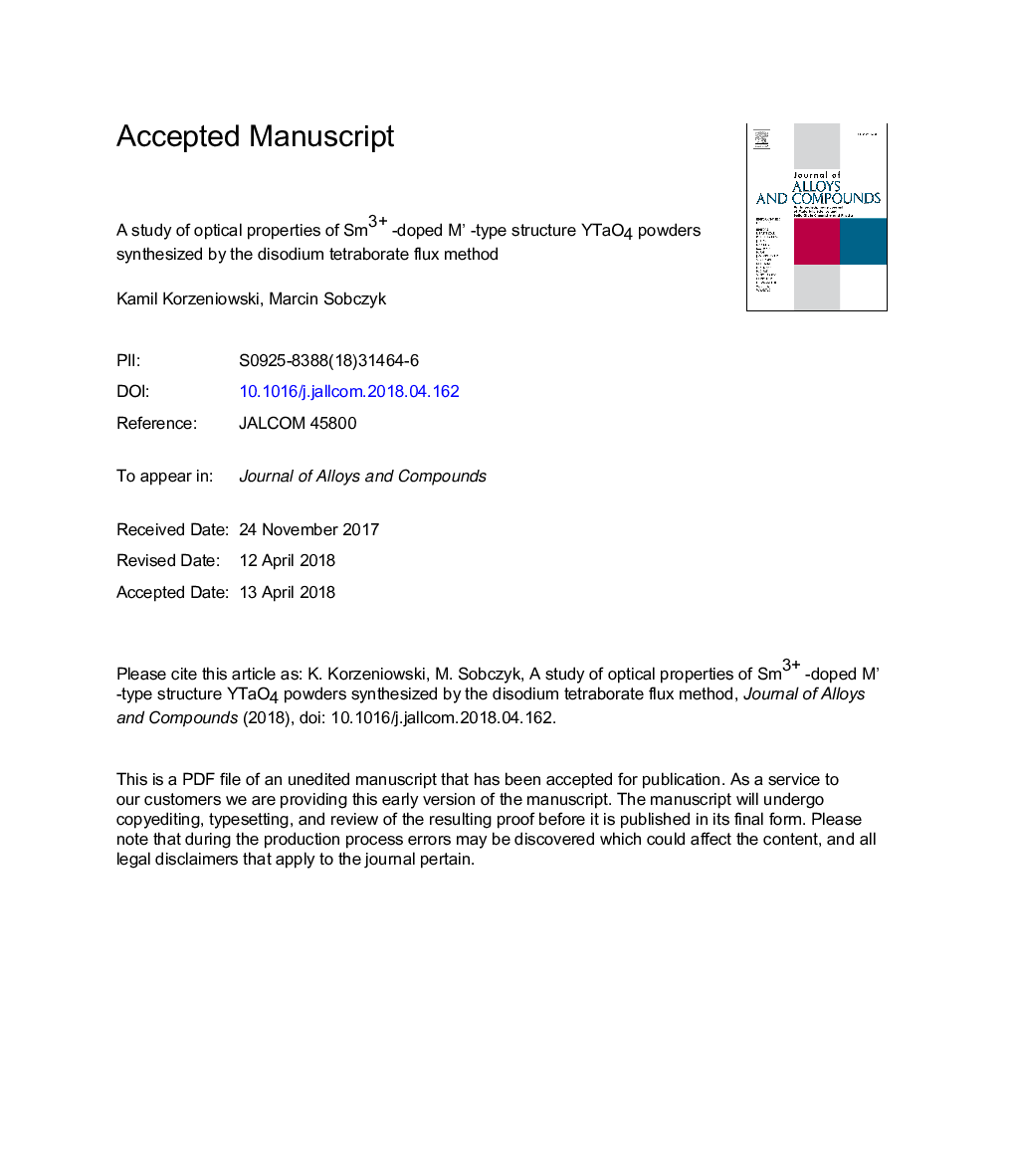| Article ID | Journal | Published Year | Pages | File Type |
|---|---|---|---|---|
| 7991624 | Journal of Alloys and Compounds | 2018 | 36 Pages |
Abstract
The Y1-xSmxTaO4 (xâ¯=â¯0.1, 0.5, 1.0, 2.0 and 5.0) compounds have been synthesized by conventional solid state method using disodium tetraborate as flux. The growth process of title compounds was studied using X-ray diffraction and electron microscopy (SEM and TEM). The powder diffraction pattern was indexed on a monoclinic cell, space group P2/a, lattice parameters: aâ¯=â¯5.302, bâ¯=â¯5.454 and câ¯=â¯5.115â¯Ã
, Zâ¯=â¯2 and Vâ¯=â¯146.97â¯Ã
3. The absorption (300â¯K) and fluorescence spectra (5 and 300â¯K) as well as the fluorescence dynamics of the Sm3+:YTaO4 are presented and analysed in detail. The room-temperature absorption spectra have been analysed using the Judd-Ofelt approach. The intensity parameters have been evaluated and subsequently used to calculate fundamental spectroscopic parameters: the spontaneous transition probabilities, the branching ration, emission cross-sections and natural lifetime for the 4G(4)5/2 emitting level. The luminescence spectra recorded between 5 and 300â¯K are composed of transitions from the 4G(4)5/2 level to the 6H5/2, 6H7/2, 6H9/2, 6H11/2, 6H13/2, 6H15/26F1/2, 6F3/2 and 6F5/2 levels. The maximum emission cross-section has been calculated to be 0.935 and 0.985â¯Ãâ¯10â21â¯cm2â¯at 609.1 and 657.1â¯nm, respectively. The electron-phonon coupling parameter α¯ was found to be in the range 127-512â¯cmâ1 for the 4G(4)5/2â¯ââ¯6H5/2, 4G(4)5/2â¯ââ¯6H7/2 and 4G(4)5/2â¯ââ¯6H9/2 transitions.
Related Topics
Physical Sciences and Engineering
Materials Science
Metals and Alloys
Authors
Kamil Korzeniowski, Marcin Sobczyk,
